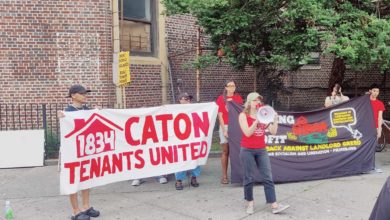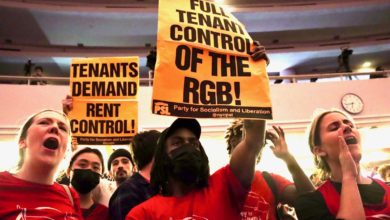Photo: Sit-in outside Congress led by Rep. Cori Bush
Bowing to mounting pressure and public outrage, the Biden administration through the Centers for Disease Control has announced that the nationwide moratorium on evictions would be extended through October 3 in parts of the country with high rates of COVID-19 spread. Because the disease is spreading so rapidly, this will reportedly cover the vast majority of the country, home to approximately 90 percent of people.
This is a major victory for the growing movement to stop evictions and win the right to housing for all. When the Biden administration and the Democratic Party-controlled Congress refused to take action before the July 31st moratorium expiration, anger spread across the country at their cruel indifference. Representative Cori Bush of Missouri, a grassroots movement leader who personally experienced homelessness earlier in life, began a round-the-clock outdoor sit-in on the steps of Congress. She was joined by a growing number of other activists who shared her outrage, and the sit-in drew significant media attention, piling pressure on Biden and Congress to act.
This movement has major battles ahead. Today’s announcement is likely to be legally challenged by organizations representing landlords. The administration’s decision to have the new moratorium not be 100% comprehensive is likely designed to help it withstand this legal challenge, since a majority of Supreme Court justices last month stated that they would not approve of a moratorium extension. But like any other institution of power, the Supreme Court is susceptible to pressure from the people’s struggle. And the federal government absolutely has the authority and the resources to act decisively. For instance, cutting less than 10 percent of the Pentagon’s war budget would free up enough money to pay off all back rent owed in the country. Ultimately the housing crisis will not be resolved until the government cancels rents and mortgage payments along with accumulated debts to landlords and banks.






